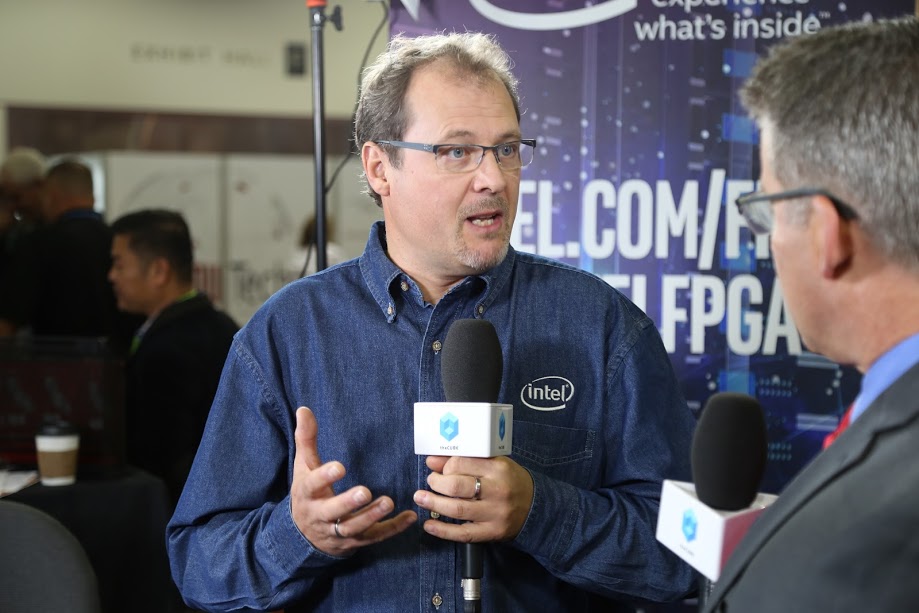 BIG DATA
BIG DATA
 BIG DATA
BIG DATA
 BIG DATA
BIG DATA
Intel’s recently unveiled plans to deploy customized field programmable gate array-based acceleration of storage and computing workloads are welcome news for developers who are pushing the data center boundaries. Fields such as genomics and finance are using increasingly complex data-intensive applications, and the acceleration of workloads in high-performance computing is becoming no longer nice but necessary.
“The world of computing must accelerate. I think we all agree on that,” said Bernhard Friebe (pictured), senior director of FPGA software solutions marketing at Intel. “FPGAs are really a truly versatile, multi-function accelerator.”
Friebe stopped by theCUBE, SiliconANGLE Media’s mobile livestreaming studio, and spoke with host Jeff Frick (@JeffFrick) during the Supercomputing conference in Denver, Colorado. They discussed details surrounding the latest FPGA deployment and a timetable for general availability of the new technology. (* Disclosure below.)
Intel’s acceleration stack announcement provides the Xeon CPU and FPGA in-package. A software framework solution stack sits on top of hardware implementations, allowing the data center operator to enable FPGA like any other compute resource.
“This really makes it easy for a developer to [create] an accelerator for a user to then deploy,” Friebe said. “The FPGA with flexible I/O and a flexible core can actually run within the data path. That’s what we call in-line processing.”
Developers can stream directly into the FPGA and perform acceleration functions as the data comes in. Intel customers are beginning to build different interfaces and connectivity around the FPGAs, according to Friebe.
The FPGA-accelerated platform solution is currently available for sampling, and Intel has made its Open Programmable Acceleration Engine available on GitHub. The company plans to go into volume production in the first half of 2018.
“We enable and encourage a broad ecosystem to build solutions,” Friebe said. “You see a lot of innovation going on, and we need to move faster.”
Watch the complete video interview below, and be sure to check out more of SiliconANGLE’s and theCUBE’s coverage of the Supercomputing 2017 conference. (* Disclosure: TheCUBE is a paid media partner for the Super Computing 2017 conference. Neither Intel, the event sponsor, nor other sponsors have editorial control over content on theCUBE or SiliconANGLE.)
THANK YOU